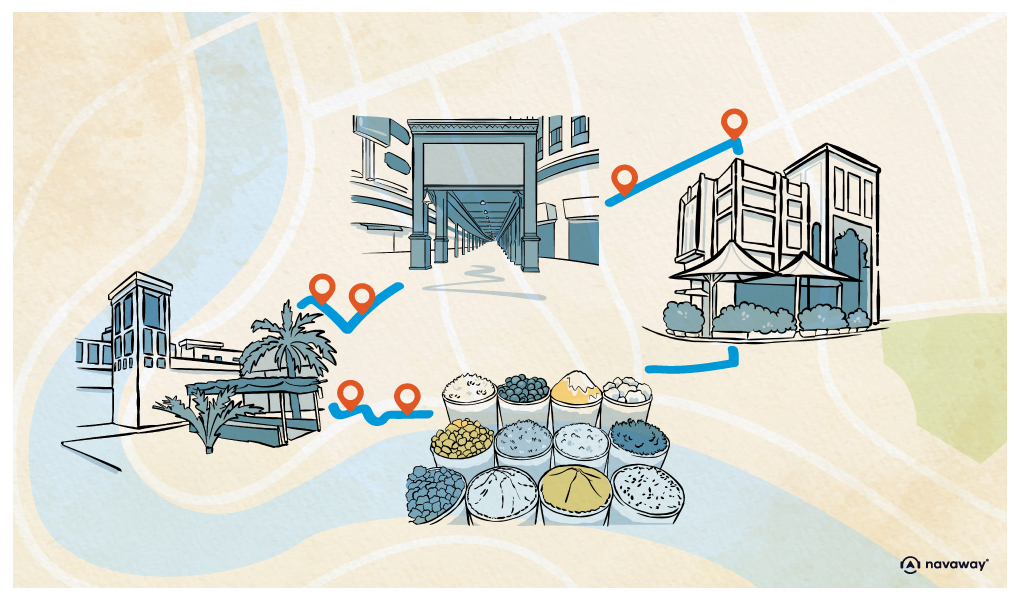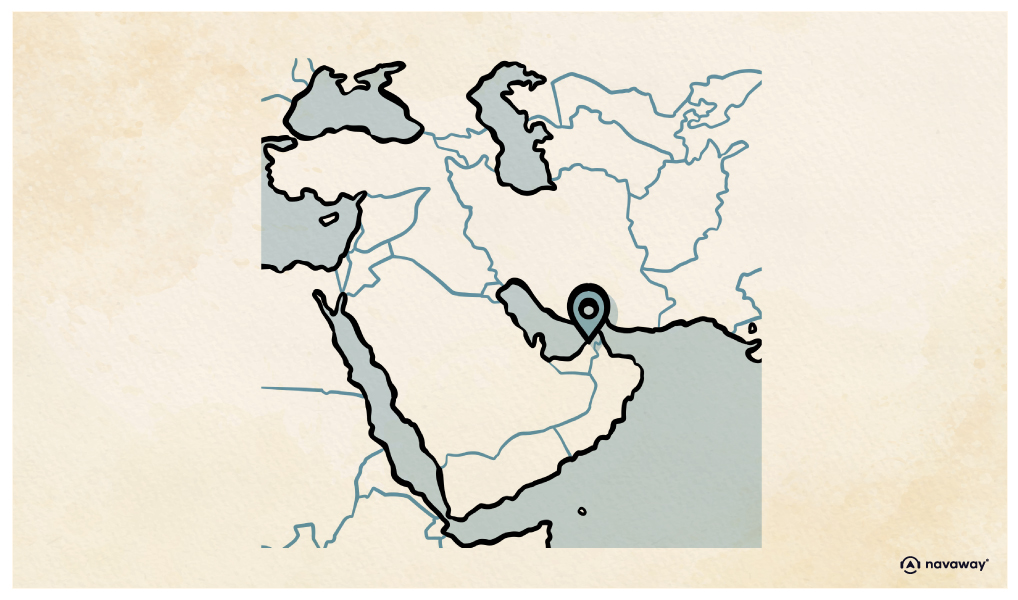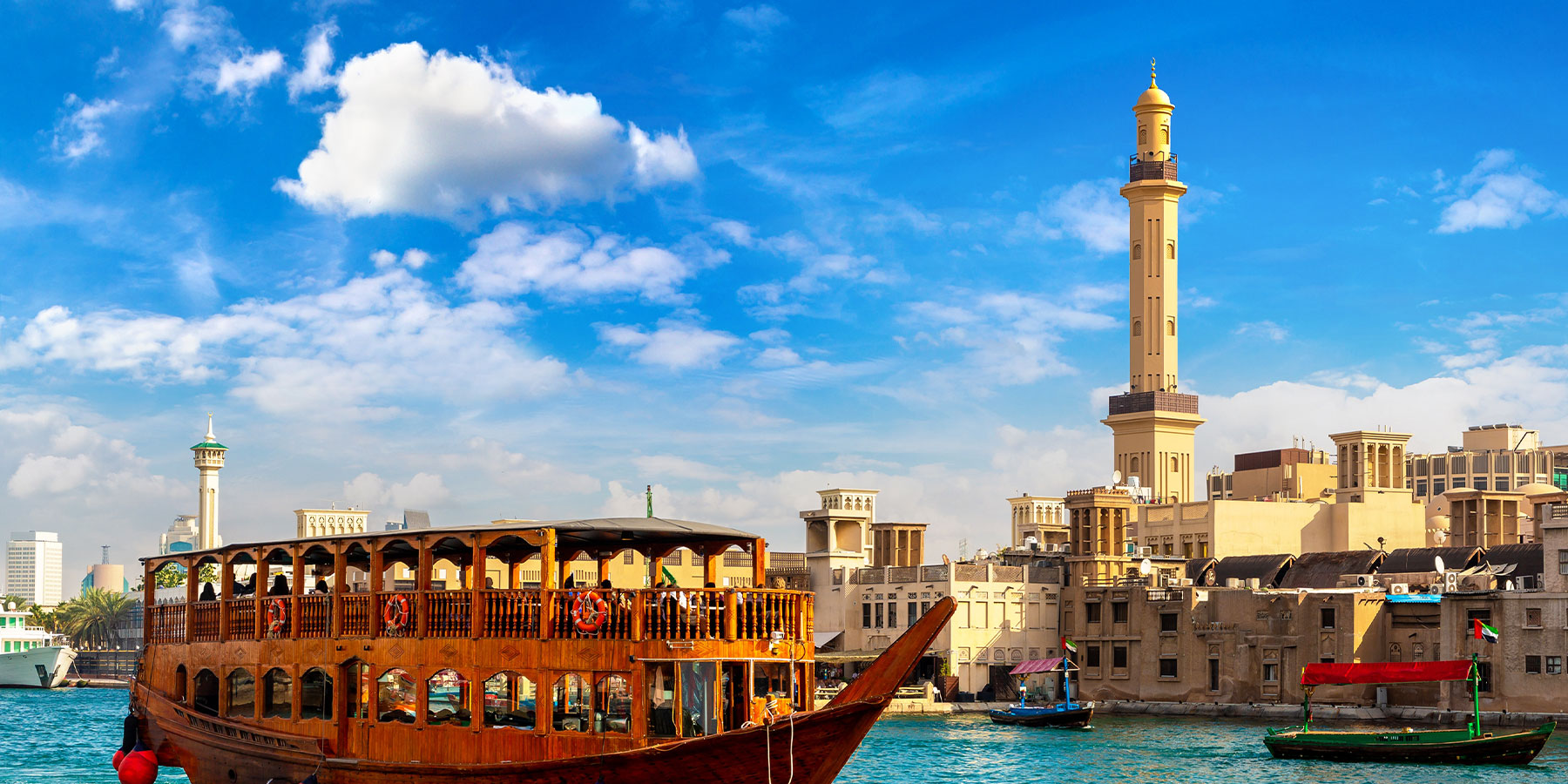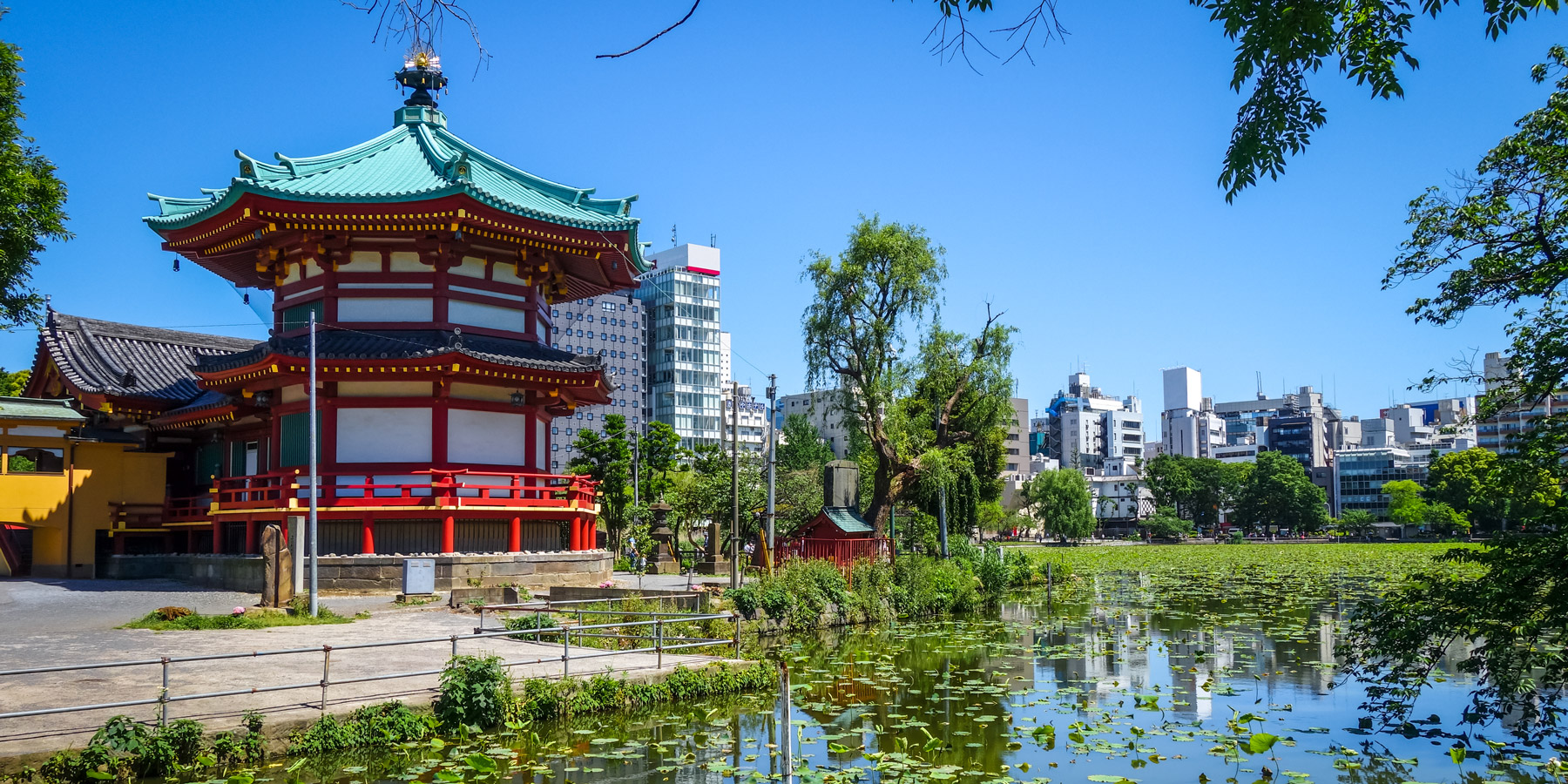
Dubai’s history

This point of interest is available as audio on the tour: Visit Dubaï, The Old Town
Let me tell you a bit about the history of Dubai during this short walk. You might be wondering how this extravagant city, right in the middle of a desert in the United Arab Emirates, has become what it is today—home to the tallest skyscraper in the world, the biggest shopping mall, and one of the most visited tourist destinations on the planet. In short, how has this place become the city of many possibilities? Know that the UAE was only founded in 1971, surprisingly, and is made of seven emirates, such as Abu Dhabi, covering 87% of the territory, and Dubai. So yes, Dubai is an emirate before anything else—an area of Muslim culture ruled by an emir. However, that doesn’t mean the city isn’t old. Archaeological findings reveal that the area has been inhabited for 3 000 years, mainly by fishermen living along the Gulf. However, it’s not until the 11th century that Dubai is first mentioned in written texts, and not until 1833 that it’s recognized as an actual city. Back then, people living in the old neighbourhoods of Bur Dubai and Deira survived by raising livestock, harvesting dates, and trading pearls—which quickly became the main economic activity in the city. At the end of the 19th century, the leading emir expanded and developed Dubai’s international trade, which helped grow the city into a major pearl trading hub. At the time, the city was surrounded by defensive walls for protection against attacks, though it also helped control the merchandise flow. The emir also implemented tax exemptions to any expats willing to settle in the city, which obviously attracted a lot of foreign workers who ended up staying. Unfortunately, Dubai’s pearl trade suffered a heavy blow after World War II and the invention of artificial pearls in Japan. Dubai had to therefore rely on fishing and trading spices, gold, and textiles, until things took a turn in the 1960s with the discovery of oil. What was once a small fishing town turned into a booming commercial hub with rapid economic growth. In 1971, the UAE was officially formed, then in the 1980s, Dubai saw its oil-driven economy suddenly take off, leading to a huge rise in inhabitants—from 59,000 in 1969 to 550,000 by 1990. That’s when the city’s skyline began to transform, with the apparition of residential towers, commercial skyscrapers, and malls specially designed to attract the growing number of visitors and workers coming from all around the world. In just a few years, impressive landmarks such as Dubai Mall, Burj Khalifa, and Burj Al Arab came to life to draw even more tourists. Today, tourism is actually the main driver of Dubai’s economy. So it’s pretty understandable why they’ve given their all for these buildings! That’s how this small fishing village became Dubai—the city of excessiveness, influencers, and some of the most modern architecture in the world.

Discover other tours to visit Dubaï

Discover Dubaï with app
An interactive guide through the most beautiful streets, squares, and districts
15 fun audioguides full of historical facts, anecdotes, and legends






Comments